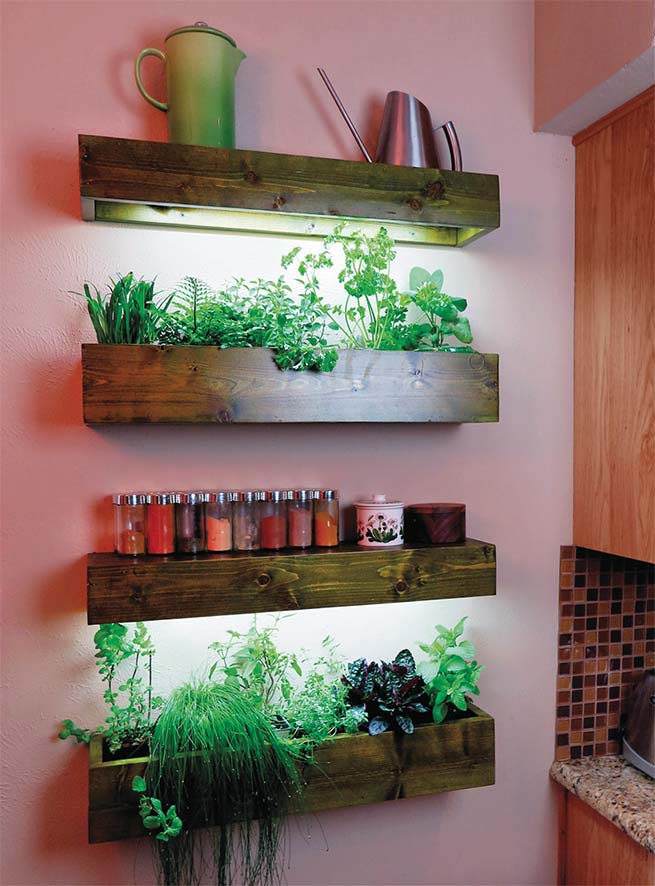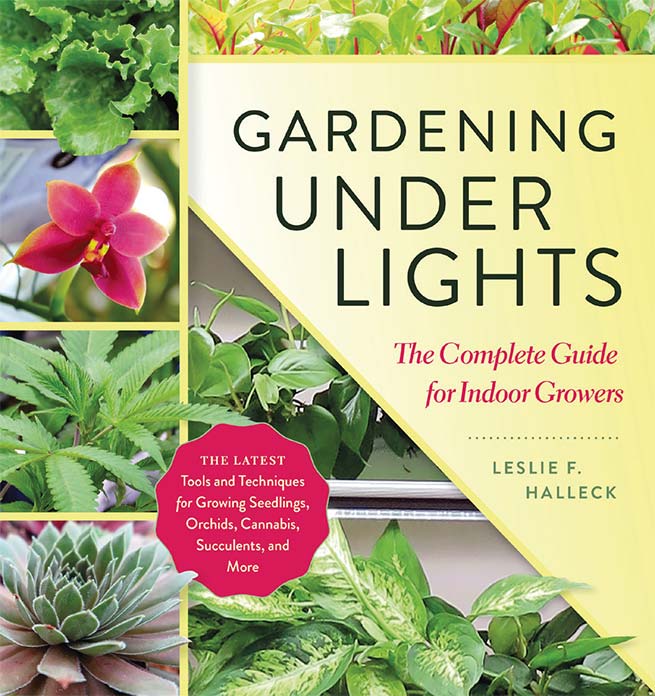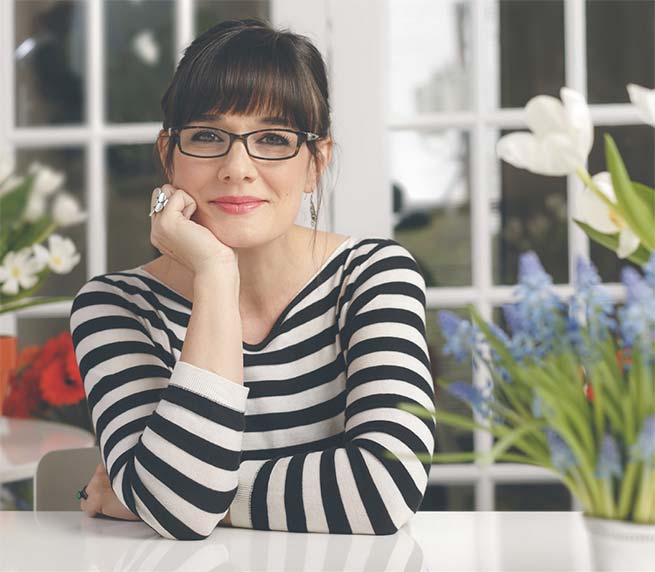
Photo: Leslie Halleck
A sunny windowsill is not enough.
If you want to grow succulents, start seedlings or raise kitchen herbs indoors, you are probably going to need more light.
“There are a lot of trendy articles out there about growing sun-loving herbs on windowsills.” Unfortunately, that won’t work, says Leslie F. Halleck, author of Gardening Under Lights: The Complete Guide for Indoor Growers. “It can often take double the amount of light that people think it is going to need,” she says.
The book, released earlier this year by Timber Press, is a comprehensive guide for would-be indoor gardeners. It is admittedly geeky.
It explains the basics of photosynthesis, the properties of different types of light and how plants put them together to flourish. Things you need to know for the best indoor garden.
But you don’t have to read all of it. Skip around and read what you need for plants you want to grow, Halleck says. You do have to know something about the different types of light to ensure you are getting the right type for your plant.
Types of plants, including succulents and vegetables, are listed along with general light requirements for some of the most popular varieties of each.
Indoor gardening can be as simple as providing a stylish light to spotlight a single plant or as complex as growing a whole vegetable garden in your garage.
A spotlight with an LED grow light can be fine for a single plant like an orchid.
Or you can design a specific installation to fit your interests and space.

Halleck has a beautiful four-shelf system in her kitchen growing herbs, ferns and orchids. Two floating wood shelves hide lights for the herbs bursting from the others.
The unit is practical and striking wall art (see above).
Starting seedlings for later planting outside is a common indoor-gardening goal. This is where all the information about light is essential.
Often ambitious gardeners will just hang some fluorescent lights, put the seed beds under them and think they are off to the races. Maybe. But it’s not guaranteed.
Light is not just light. Some have only certain wavelengths, others are known as full spectrum (or white light). Spending a little time figuring out what you want to grow and what type of light it needs can save money and heartache.
Cheaper lights may cost more to run than specialized lights. And cheaper lights may be a failure.
The lights in off-the-shelf package deals from garden-supply stores and garden centers often don’t provide the necessary strength or type of light needed, especially if you are trying to start several types of plants, Halleck says.
Once you figure out the lighting for smaller plant installations, you may be tempted to grow your own food. Lights can be set up in almost any space. Unused closets work, and a few enterprising gardeners have taken over spare bedrooms. Most, like Halleck, commandeer the garage to try out lettuce, tomatoes, peppers and other edibles.

PHOTO: STACEY JEMISON
“It can often take double the amount of light
that people think it is going to need.”
— Author Leslie F. Halleck
“I’m not going to tell people they can grow enough food to feed their families 12 months out of the year,” Halleck says, but it can provide regular fresh produce at your fingertips.
She grows her veggies in tents, each with lighting specific to the plant. Growing in tents allows production all year round, no matter the weather. Think fresh vine-ripened tomatoes from your garage in January. Halleck encourages growers to try out varieties of plants and seeds that aren’t readily available in local nurseries.
Putting grow lights in your garage can get you some funny looks from neighbors, though their first thought can be that you’re growing a fine crop of marijuana.
“There is a stigma attached to indoor-light growing,” Halleck admits. That is fading as more people set up indoor gardens for other plants. Though, she does expect more people to start growing their own cannabis indoors as it becomes legal in more places. Recreational marijuana is legal in nine states, and 30 states allow medicinal marijuana. Cannabis became legal across Canada in October.
The same technology can be used to grow micro greens or marijuana, Aleck says.
Once again, it’s just a matter of getting the right light.
RESOURCES FOR INDOOR LIGHTS AND INSPIRATION
- Sol tech Solutions—soltechsolutionsllc.com
- Gardener’s Supply Company—gardeners.com
- Garden Supply Guys—gardensupplyguys.com
- OPCOM Farm—opcomfarm.com
- Ui Studio—nui-studio.com
-
Karel Hollowayhttps://www.edibledfw.com/author/kholloway/
-
Karel Hollowayhttps://www.edibledfw.com/author/kholloway/
-
Karel Hollowayhttps://www.edibledfw.com/author/kholloway/
-
Karel Hollowayhttps://www.edibledfw.com/author/kholloway/











